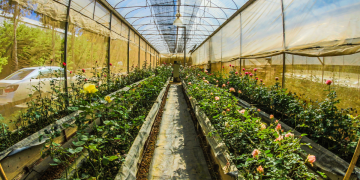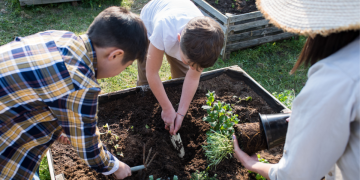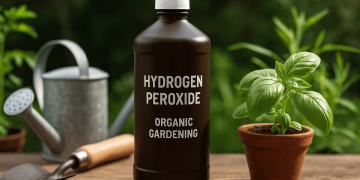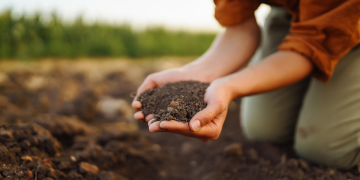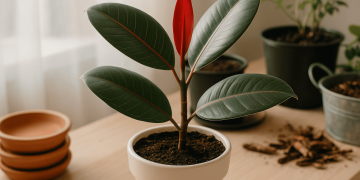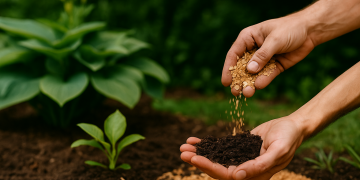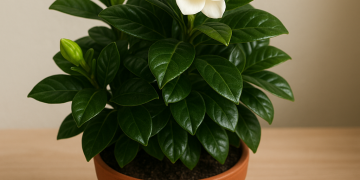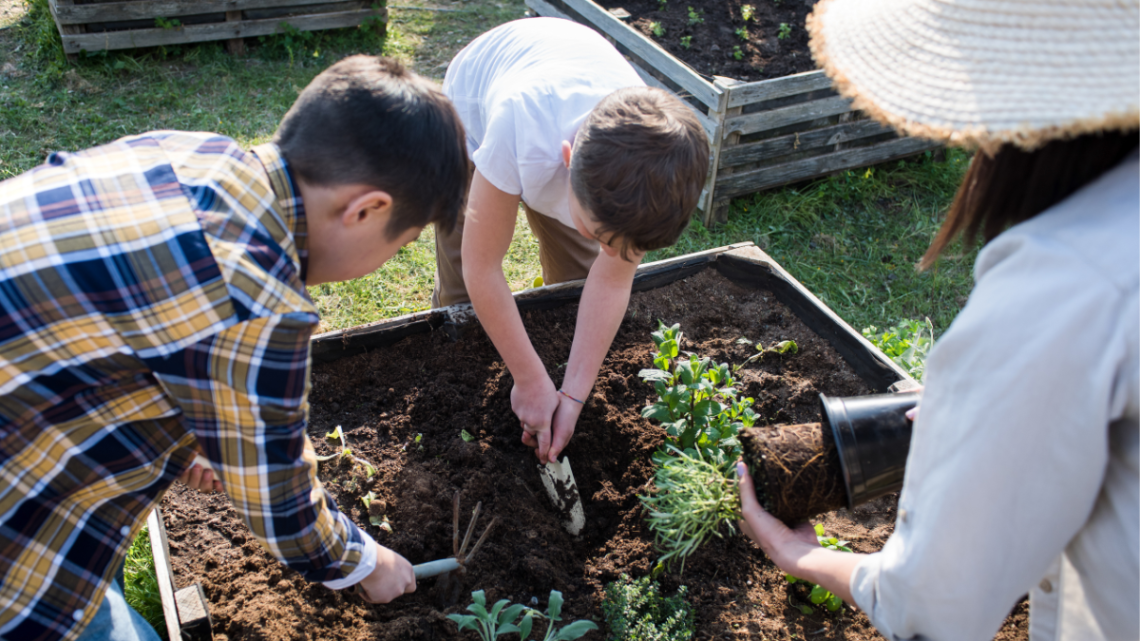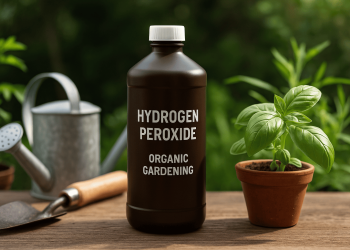Is your garden turning into a puddle every time it rains? Or maybe you’re simply looking for a way to lower your ecological footprint without complicating your life. A rain garden might be the answer. These gardens are gaining popularity among homeowners worldwide because they don’t just decorate, they work. Acting like a natural sponge, a rain garden captures water from roofs and other hard surfaces, then slowly filters it back into the ground instead of sending it rushing to the nearest drain.
The problem is bigger than a few puddles. With climate change and cities packed with concrete, traditional drainage systems can’t keep up with the growing stormwater runoff. That’s why organizations and urban planners are betting on rain gardens: they filter pollutants, reduce soil erosion, and improve the health of nearby rivers and streams.
In this guide, you’ll learn how to design your own sustainable rain garden to control runoff, reduce flooding, and even give a boost to local biodiversity right in your backyard.
What is a Rain Garden?
A rain garden is a shallow depression filled with soil that is absorbent and free-draining. It is filled with plants that can tolerate temporary flooding. Rain gardens are intended to remove low-level pollutants, lessen the amount of rainwater that runs off into drains from impermeable regions. The U.S was the first country to develop these gardens in the 1990s.
When rainwater gardens fill up after especially heavy rainfall, any extra water is diverted to the existing drains. Normally, stormwater gardens absorb all of the rainwater that falls into them. You can install your rain garden in every type of soil and wherever you have enough space. You do not need to redesign your entire drainage system to build a water-absorbing garden. A normal rain garden can withstand waterlogging for 48 hours..

What Makes a Rain Garden a Rain Garden?
At first glance, a rain garden looks like any other perennial bed, with flowers, grasses, and shrubs that return year after year. The difference is in its purpose: instead of just decorating, it’s engineered to manage water. Imagine it as a natural bowl designed in your yard, shallow enough to fill after rain but smart enough to drain slowly.
Here’s what sets a rain garden apart from a regular flower patch:
- Ponding area: it captures runoff from roofs, driveways, and other hard surfaces.
- Living filter: stores and cleans water that would otherwise harm your property.
- Native plants only: chosen because they thrive locally and handle both floods and droughts.
- Deep, rebuilt soil bed: a few feet of amended soil to prevent compaction and boost absorption.
- Directed runoff required: while it helps with general drainage, it’s not truly a rain garden unless stormwater is intentionally channeled into it.
In short: a rain garden looks like a garden, but works like green infrastructure.
Why Designing a Rain Garden is Essential for Sustainable Landscaping
Urban areas are full of impervious surfaces like asphalt and concrete, which make rainwater rush straight into drains, dragging pollutants with it. Traditional systems can’t always cope, but a rain garden can step in as an ally against floods and pollution.
Here’s why it matters:
- Prevents local flooding: its shallow basin holds stormwater temporarily, avoiding sudden street floods.
- Recharges groundwater: as water seeps through soil layers, it’s naturally filtered and stored underground.
- Supports biodiversity: native plants create habitat for birds, pollinators, and beneficial insects.
- Keeps nearby trees hydrated: captured water seeps into the soil, giving trees a steady supply during dry spells.
- Improves soil quality: compost, mulch, and native plants enrich the soil and boost microbial life.
- Reduces erosion: by slowing runoff, it protects topsoil and tree roots.
- Filters pollutants: pesticides, oils, and fertilizers are trapped and broken down before reaching waterways.
- Creates a cooler microclimate: vegetation and moisture soften the heat island effect of paved cities.
In short, a rain garden turns stormwater from a threat into a resource that nourishes your landscape and the environment.

How to Choose the Best Location for Designing a Rain Garden
When it comes to rain gardens, location is everything. Think of it as placing a natural drain in your yard: it should sit where runoff naturally flows and collects. To spot the right place, observe your land during heavy rain. If the flow isn’t obvious, you can always guide the water with pipes, a swale, or a small channel.
Here are some tips to get the location right:
- Keep distance from buildings: place your garden at least 10 feet away from your house and your neighbors’.
- Avoid septic systems: never install it over or next to a drain field.
- Skip soggy spots: don’t put it where water already collects; instead, locate it slightly upslope.
- Prefer sunny areas: sunlight helps with drying and infiltration, but partial shade can also work.
- Blend with your landscape: design it to fit your yard’s style, whether formal or informal.
- Protect trees: avoid digging under mature trees with wide root systems.
- Check groundwater depth: don’t build where the water table is too close to the surface.
Once you’ve chosen the right spot, you can direct extra runoff into the garden with pipes. Keep this flow in mind when sizing your rain garden, the location will determine how much water it needs to handle.
Soils and Drainage of Rain Gardens
The success of a rain garden starts underground. The type of soil you have will decide how well your garden absorbs and filters water.
Best Soil for Rain Gardens
Rain gardens thrive in sandy or well-drained soils, where water moves easily. Sandy soil works like a colander, letting water flow through quickly. By contrast, clay soils act more like a saturated sponge, they trap water and drain slowly. If your yard is sandy, enrich it with compost for healthy plants. If it’s clay, you’ll need more preparation, but it’s still possible with the right mix.
Rain Garden Soil Mix
For heavy clay soils, replacing part of the soil is often the best option. The ideal recipe is:
- 50–60% sand
- 20–30% topsoil
- 20–30% compost
No clay included.
How to Test Rain Garden Soil Drainage?
Before choosing a spot, test how fast your soil drains:
- Dig an 8×8-inch hole.
- Fill it with water.
- Measure how long it takes for the water level to drop.
Slower than that? More preparation is needed. If it drops at least 1 inch per hour, your soil is suitable.

Signs of Impermeable Soil:
- The ground stays soggy for days after rain.
- Within 12 inches, soil shows gray tones with brown patches (wetland indicator).
- A test hole still holds water after 2 dry days.
If you notice these signs, consider designing your garden as a backyard wetland or choosing another location. Otherwise, you’re good to go!
The Perfect Shape and Depth for Designing a Rain Garden
The size and shape of your rain garden aren’t just aesthetic choices, they determine how well it manages water. To calculate it, measure the total square footage of your impervious surfaces (roof, driveway, patio). Your rain garden should cover about 5–10% of that area.
👉 Example: if your roof and driveway together measure 3,000 sq ft, a 300 sq ft rain garden will do the job.
As for shape, you have flexibility. Think of it as a shallow tray that adjusts to the land. A practical rule is to make the garden twice as long as it is wide, positioned perpendicular to the slope. This way, it intercepts and absorbs runoff more effectively.
Steps to Dsign Your DIY Rain Garden
Building a rain garden is easier than it seems. Think of it as a three-part process: draw it, dig it, and plant it.
- Mark the layout: outline the garden area with string or spray paint. Don’t forget to mark both the inlet (where water enters) and the overflow outlet (where excess drains).
- Dig the basin: excavate a shallow depression about 6–8 inches deep. Amend the soil if infiltration is slower than 0.5 inches per hour. Keep it under 8 inches to prevent mosquito issues, and add a small berm to control ponding height.
- Plant strategically: on the upper slopes, place drought-tolerant plants. In the lowest zone, use species that can handle both dry spells and temporary flooding.
With these steps, you create the foundation of a rain garden that not only looks good but also works as natural stormwater management.
Right Plants for Rain Garden Designs
A rain garden isn’t just functional, it can also be one of the most striking features of your landscape. Think of it as a stage where each plant plays a role, from tall grasses to colorful flowers. The secret is mixing beauty with resilience.
Here are some planting tips to get it right:
- Mix heights and textures: combine flowers, grasses, and shrubs for depth and variety.
- Stagger bloom times: choose species that flower in different seasons to keep color year-round.
- Match plants to zones:
- Lowest areas → species that can survive temporary flooding.
- Edges and higher spots → standard landscape plants.
- Perimeter → drought-tolerant plants.
- Favor native plants: they’re low-maintenance, pest-free, and adapted to local conditions.
- Cluster for impact: group plants in clusters of 3–7 of the same species for stronger visual effect and cohesion.
- Choose strong starters: opt for container-grown plants with healthy root systems, planting them at soil level.
- Water wisely: after the first growing season, only water during long droughts.
- Support pollinators: add pollinator-friendly species to provide shelter, nectar, and nesting sites for bees and butterflies.
With the right plant mix, your rain garden becomes both a functional sponge and a living habitat buzzing with life.
Maintenance Tips to Keep Your Rain Garden Thriving
ELike any garden, a rain garden needs care —but think of it as giving regular service to a natural system that protects your home and the environment. With just a few tasks, you’ll keep it healthy and efficient:
- Mulch annually: apply a fresh layer each year to control weeds and retain soil moisture. Remove the old mulch first and keep the new layer under 3 inches.
- Weed early: during the first season, weed regularly so young plants can establish. Once mature, they’ll require less attention.
- Water wisely: keep plants well-watered while they establish. Later, only water during long dry spells (about twice a week if drought persists).
- Clear and replant: remove dead vegetation and debris. If a plant isn’t thriving, replant it in a better spot.
With the right upkeep, your rain garden will not only manage stormwater but also enrich your landscape with beauty and resilience.

